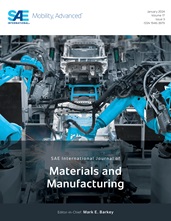Energy Dissipation in Modulation-Assisted Machining of Aerospace Alloys
- Event
- Content
- The beneficial effects of contact disruption in modulation-assisted machining of aerospace alloys have been well documented, but sources for such improvements are not well understood. This study explores the underlying nature of differences that occur in energy dissipation during conventional and modulation-assisted machining by characterizing the relationship between controllable process parameters and their effects on chip formation. Simultaneous in situ force and tool position measurements are used to show that the forces in modulation-assisted machining can be described by empirical force models in conventional machining conditions. These models are found to accurately describe plastic dissipation over a range of modulation conditions and configurations, including in cases where energy expenditure decreases with the application of modulation. These observations suggest that the underlying response in modulation-assisted machining is analogous to that of conventional machining. Implications for better understanding energy-related effects for modulated tool paths are briefly discussed.
- Pages
- 8
- Citation
- Norman, J., Moreno, C., Wang, Z., Saldana, C. et al., "Energy Dissipation in Modulation-Assisted Machining of Aerospace Alloys," SAE Int. J. Mater. Manf. 8(1):27-34, 2015, https://doi.org/10.4271/2014-01-2240.
